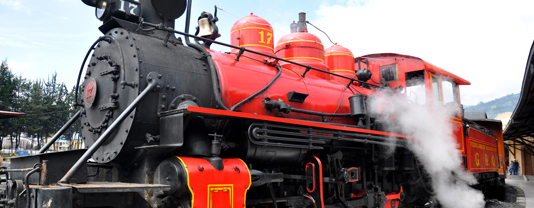The historical rail company is involved in an extensive plan promoted by Rafael Correa Delgado’s government to revamp the network. A group of intrigued secondary school students walk around a splendid steam locomotive and listen attentively to one of the railway workers who welcome visitors to the “Museo del Tren de Chimbacalle” (Chimbacalle Train Museum). It is a symbolic image of the new life which the Ecuador Railways embarked upon as of 1 April 2008 when the Instituto Nacional de Patrimonio Cultural (National Institute for Cultural Heritage) declared Ecuador’s rail network a “Monumento Civil y Patrimonio Histórico, Testimonial, Simbólico” (Testimonial, Symbolic, Civil and Historical Heritage Monument) and the process of revamping the railway system promoted by Rafael Correa Delgado’s government began.
A project which on the one hand aims to bring the railways back to life purely as a tourist attraction and on the other aims, over time, to create a rail transport culture in the whole population, starting in fact with schools. Four years down the line a great deal has already been done and results have proved that those who believed in the project, which also aims to create economic growth in the regions crossed by the railways, were right. The state of the Ecuadorian network, which had been left abandoned for decades and in terms of infrastructure still dated back to the early 1900s, was such that any idea of immediate reuse for modern passenger and freight services would have meant total and radical reconstruction along a new route. Consequently the government cleverly decided to focus on a recovery program aimed at transforming the technical and historical features of the Ecuadorian railways into a tourist and cultural attraction: one need only consider the interest which the Nariz del Diablo (the Devil’s Nose) track arouses around the world where, to overcome a major gain in altitude, the railway climbs up the side of the mountain thanks to a series of zigzags along which the train shunts back and forth.
We talked about this interesting restoration project with María Belén Molina, deputy chief executive of the FEEP (Ferrocarriles del Ecuador Empresa Publica – Ecuadorian Railways Company) who welcomed us to the railway company’s head office in Chimbacalle, in the southern quarter of Quito.
Full article is available only for registered users.
Click the link below to download pdf version of Railway Engineering
